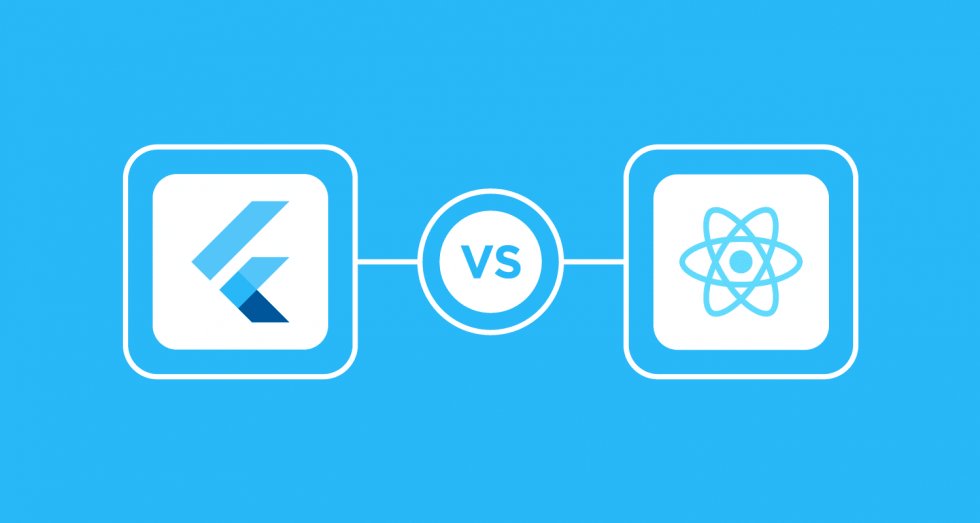When choosing native app development, programmers had to rebuild the complete code from the ground – up to produce applications for numerous platforms.
Yet, with the introduction of the aforementioned platforms, the need for tools exclusively built to design native apps. As a result, React-Native, and Flutter were both created to decrease the time and effort involved in developing apps for various platforms. Such frameworks made it possible for app developers to write a single instance of code for various platforms while keeping the applications graphically and technically consistent.
For the second year in a row, React Native and Flutter are the most popular technologies for cross-platform software development of mobile applications. Its adoption rate is steadily increasing and has surpassed that of its rivals. In this article, we will compare Flutter and React-Native in greater detail.
Moreover, now that we have dozens of tools for cross-platform app development, why should we emphasize React Native vs. Flutter? Let’s get started with the frameworks indicated above.
React Native VS. Flutter
While there are so many platforms for hybrid app development, deciding which one to use has always been a source of contention. But first, let’s clarify the disparities between React Native and Flutter before deciding on the finest cross-platform app development frameworks.
So, here’s a full breakdown and comparison of React Native vs. Flutter.
React Native
Facebook launched React Native in 2015, and it has since been established as one of the major hybrid app platforms thanks to its use of JavaScript for designing native mobile apps. Leveraging JavaScript and a few native component APIs, programmers may create iOS and Android applications on this accessible platform.
React Native, on the other hand, provides the functionality of leveraging platform-specific native UI elements via a cross-platform developer interface (React), but Flutter apps are interconnected with unique UI requirements and provide a different account experience to users.
Some of the Outstanding React Native Apps
Among the well-known apps built using react-native are:
Instagram, Uber, Facebook, Walmart, Facebook Ads Manager, Vogue, Tesla, Pinterest, Sound Cloud Pulse, Facebook Analytics, Skype, Bloomberg, Wix, and many other applications.
Why Should One Prefer React Native?
- You can use React Native to access native features like the camera, accelerometer, and many others.
- It provides a high-quality mobile user interface (UI).
- Codesharing is simple on both iOS and Android devices.
- You can construct your app considerably faster if you use pre-built pieces.
- By directly leveraging native code, you may take the app’s efficiency to the next level.
- It’s simple to learn, and there are plenty of guides on Google and YouTube to help you grasp how it works.
Why Should One Not Consider React-native?
Flutter
Flutter is a remarkably new entrant in the competition; it is an open and free platform backed and designed by Google, and its programming language is Dart, a faster and easier object-oriented computer program. Because of these qualities, you can create a seamless and consistent hybrid app without having to go through the hassle of designing a separate app for iOS and Android. Both systems can be served by the same code base.
The nicest part about flutter is that it has its unique gadgets that are not only good-looking and configurable but also super-fast because of its own higher-quality rendering engine. Due to this new functionality, one-of-a-kind mobile applications may be constructed using a wide library of customizable widgets.
Flutter’s framework is built on functional programming, which is very popular nowadays.
Some of the Phenomenal Flutter Apps
Alibaba, AppTree, Topline, Google AdWords, Hookle, Hamilton Musical, Google Greentea, BetaBubs, Reflectly, OfflinePal, Birch Finance, and many other well-known apps are developed on Flutter.
Why Should One Prefer Flutter?
- When you’re producing an MVP, Flutter is the platform to use because it takes much less time to create an app.
- You may perform tests on both platforms using the same program, and the overall quality assurance method will be significantly quicker.
- Flutter, like React, uses a single code base, which reduces project duration.
- Using Flutter, you can create your widgets and modify existing widgets as Cupertino widgets and material design widgets.
- Flutter is also popular among developers because it allows them to create code considerably faster, correct errors rapidly, and simply add features.
Why Should One Not Consider Flutter?
- Despite Flutter having Google’s full backing in the form of various useful libraries loaded with readily available functionality, it still lacks some third-party services such as tax automation software, payment systems, and so on.
- Flutter is currently the platform’s infancy. As a result, there is no way of knowing if the platform will prosper or not.
Conclusion
React-Native was created as a Mobile Application Framework, and Flutter was created as a User Interface Software Development Kit (SDK) for mobile apps. Ever since technologies have progressed and broadened their device availability. Flutter and React-Native are now both tools for developing desktop (Windows, Mac, and Linux), mobile apps (Android and iOS), web, and embedded programs (AndroidTV, auto OS, tvOS, and others).
